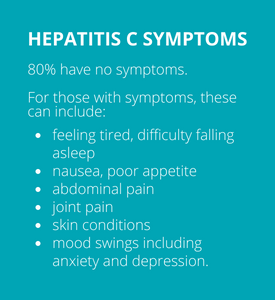"If only I had a crystal ball": Ted's hep C story
“If only I had a crystal ball”: Ted’s hep C story
A surfing holiday in 1969 marked the start of Ted Sander’s journey with hepatitis C, though it wasn’t until 33 years later that he would even find out he had the virus.
Ted’s story is not uncommon. Around 80 per cent of people with chronic hepatitis C do not show any symptoms and go for many years without knowing they have a life-long virus affecting their liver.
“I didn’t believe the doctors when they told me the results and asked them to double-check. I was very active, going to the gym regularly, and didn’t experience any symptoms,” Ted recalls.
“I had raised a family and started my own business, which employed ten staff at the time.”
Many people who have hepatitis C are baby boomers who contracted the virus back in the 1960s and 1970s after experimenting with intravenous drugs, perhaps only once. For Ted, this came in the form of a morphine injection, which a friend offered as payment for a wetsuit.

Fast forward to 2002, when Ted was diagnosed and had his first of seven liver biopsies. Ted describes the pain of the biopsies as “incredible” and served as a wake-up call to learn more about his chronic condition.
It was around this time Ted became aware of Hepatitis Queensland. He attended regular meetings as well as began an 11-month pegylated interform treatment program in the hopes of curing the virus.
“Hepatitis Queensland was a real liver saver, and without their input, I just don’t know how I would have managed.
“After 48 weeks of injections, my tests came back negative, but because very few people in my group had cleared the virus, I was not expecting too much, and sure enough, four weeks later, the tests revealed the hep C had returned.”
With treatment unsuccessful, Ted spent the next six years regularly monitoring his liver health with blood tests, ultrasounds and CT scans. A scan in 2009 revealed he had developed liver cancer, and a transplant was the only treatment option possible.
LIVER CANCER IN AUSTRALIA
• 7th leading cause of cancer deaths
• Five-year survival rate = 19%
After undergoing months of tests and successfully pleading his case with the liver transplant team, Ted was placed on the transplant list. Three months later, he was lucky enough to receive a new liver.
While Ted no longer had liver cancer, he was still living with hepatitis C, which was always in the back of his mind. When a new, less invasive cure for hepatitis C became available in 2016, Ted began an 8-week treatment course of Harvoni.
HEP C TREATMENT IN AUSTRALIA
Before 2016:
• Pegylated Interferon + Ribavirin
• Injections and tablets for 6 to 12 months
• 50-80% success rate
• Side effects include: flu-like symptoms, nausea, weight loss, fatigue, skin conditions, dry mouth, depression, and, anxiety
2016 onwards:
• Direct-acting antivirals
• Tablets daily for 2 to 3 months
• 95% success rate
• Side effects include: Mild headaches, fatigue, insomnia and, nausea.
“In the beginning, I was symptom-free but then fatigue set in, and I had trouble walking upstairs,” Ted recalls.
Thankfully Ted’s side effects were short-lived, with his energy quickly returning. In fact, three weeks after finishing treatment Ted took part in a 10km fun run.
“I was amazed that with only a couple of weeks training, I managed to run the Bridge to Brisbane in my best time yet,” he said.
“If only I had a crystal ball to go back and tell people, there was a light at the end of the tunnel.”
Now cured of hepatitis C, Ted says he wants to do what he can to let others know how important it is to be tested and treated.
“The new medications offer an extremely high cure rate for hep C, so now is the time to access treatment for those who have been putting it off for a while,” he said.
“If anyone has been diagnosed with hep C and they’re unsure of treatment, I’m open to having a chat.”
